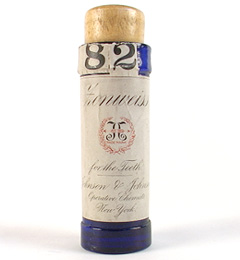
After five years of research, Colgate-Palmolive recently revealed Australia’s first recyclable toothpaste tube. Why is this exciting? They are eager to share the design with the rest of the toothpaste manufacturers and other tube-related industries in an effort to reduce the volume of plastic that ends up in landfills. It may not be as life-saving as seat belts or the Polio vaccine, but the move does bring Volvo and OG mega open-sourcer Jonas Salk to mind.
Today, toothpaste tubes are mostly plastic, but they contain a layer of aluminum that helps it stay flattened and/or rolled up. So far, multi-layer packaging like this isn’t accepted for recycling at most places, at least as far as Australia and the US are concerned. In the US, Tom’s of Maine was making their tubes entirely out of aluminum for better access to recycling, but they have since stopped due to customer backlash.
Although Colgate’s new tubes are still multi-layered, they are 100% HDPE, which makes them recyclable. The new tubes are made up of different thicknesses and grades of HDPE so they can be easily squeezed and rolled up.
Toothpaste Before Tubes
Has toothpaste always come in tubes? No it has not. It also didn’t start life as a paste. Toothpaste has been around since 5000 BC when the Egyptians made tooth powders from the ashes of ox hooves and mixed them with myrrh and a few abrasives like powdered eggshells and pumice. We’re not sure what they kept it in — maybe handmade pottery with a lid, or a satchel made from an animal’s pelt or stomach.
The ancient Chinese used ginseng, salt, and added herbal mints for flavoring. The Greeks and Romans tried crushed bones, oyster shells, tree bark, and charcoal, which happens to be back in vogue. There is evidence from the late 1700s showing that people once brushed with burnt breadcrumbs.

Get the Lead Out
In the 1800s, people were still using various types of tooth powders in the least sanitary way imaginable — you wet your toothbrush and dip it into this little glass jar over and over again. Gross, eh?
In 1824, a dentist named Dr. Peabody added soap — literally washing your mouth out as you brushed. This was later replaced by laurel sulfate, which made it more like paste and less like powder. In 1873, Colgate began mass-producing a smooth, minty paste in tiny glass jars. In 1886, Johnson & Johnson came out with Zonweiss tooth cream, which came with a tiny spoon for scooping it out and onto the brush. Zonweiss later came in tubes and is often credited as the first toothpaste in a tube, but that honor allegedly belongs to one Dr. Sheffield.
In case you’re wondering, other stuff was in tubes at this point, but no one had though to use them for toothpaste. That was until Dr. Sheffield’s son, who was studying dental surgery in Paris, saw a painter squeezing out paint from tubes onto a palette and suggested tubes to his father. In 1881, the first collapsible toothpaste tube hit the market, and it was made with tin and lead just like the paint tubes. Tin and lead, what does that remind you of? Yep, people used to take their empties and use them for solder. In World War II, toothpaste tubes were rounded up to make bullets.

Pump It Up
Some people like to squeeze every last bit of toothpaste out of the tube, which is admirable but can be difficult. We assume that this is why the toothpaste pump was born sometime in the 1980s — to make you feel like you’re getting it all out of there, or at least getting most of it out in a more sophisticated way. All these companies really need is a clever, collapsible design like this one. As long as it’s recyclable, of course.
Maybe we just need to change our behavior, making the tube more recyclable why adding in something reusable to satisfy consumer’s need to roll it up from the bottom. The 3D printing community has already solved this one in a number of different ways.

0 Commentaires